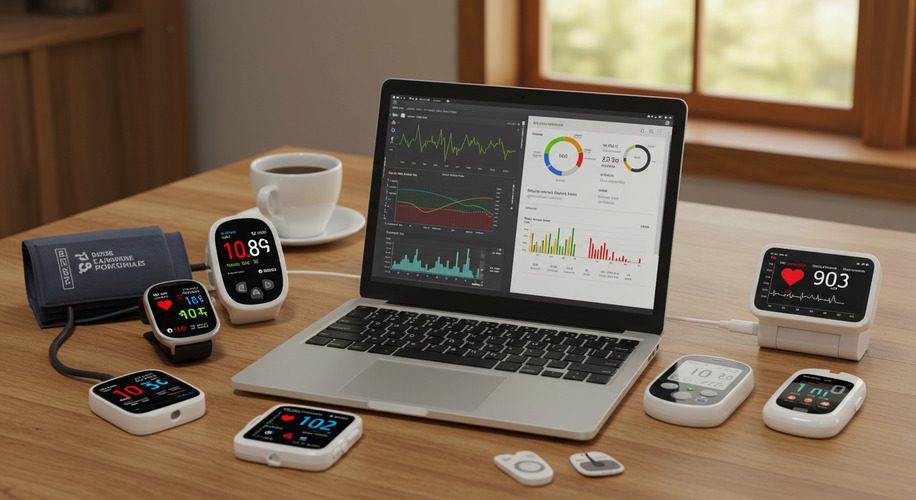
Article
Building Interoperability in SaMD: Tools and Best Practices
We don’t have a crystal ball that can tell us what’s going to happen in MedTech in 2023. What we do have is industry veteran Steve Silverman, President of The Silverman Group, a consultancy that serves medical product companies on regulatory, strategy, and policy issues.
In Part 1 of this two-part blog, Steve grades his 2022 predictions on the CDC, medical devices, the FDA and congressional action. See how well a former senior FDA official and Advamed VP scored on his forecasting for last year, and head to Part 2 to get a sneak peak into policy and regulatory changes coming to MedTech in 2023.
___________________________________________________________________________
As Hollywood has taught us, every sequel is better than the original. Need proof? Look no further than Police Academy 2, The Exorcist II, and Teen Wolf Too. Classics. So what better way to ring in 2023 than to examine how my 2022 predictions held up? To keep the fun going, I also made some predictions for what may happen at the US Food and Drug Administration in 2023. We’ll see if my educated guesses get more accurate.
I graded my 2022 predictions on what I got right and what I got wrong. A team of Swiss Nobel laureates built the grading system, so please, no reader complaints about accuracy.
I got this one mostly right. I forecast that the FDA’s Center for Devices and Radiological Health (CDRH) would continue to respond aggressively to COVID-19, while returning to normal operations. Notably, this return was much less predictable for CDRH’s Office of Health Technology VII, which regulates most pandemic devices.
But my forecast also missed the mark. I wrote that COVID demands and the prospect of better work elsewhere would spur CDRH staff departures. To its great credit, staff has largely hung in and the recent device user-fee agreement promises more bodies on board.
Steve’s grade: B
I predicted this last January, after Dr. Califf had been nominated for the commissioner role. So, backing his confirmation doesn’t make me Nostradamus. Still, given the time to find a commissioner and the many candidates, Dr. Califf’s confirmation was no sure thing. Plus, I predicted that Dr. Califf would allow CDRH leaders to steer the center through high-profile, complex initiatives. After MDUFA V, the pandemic response, and digital promotion, I’m calling this prediction for me.
Steve’s grade: A
I forecast that Congress would pass MDUFA V, CDRH’s user-fee funding package. The alternative is the collapse of the FDA’s device program, so this was a safe bet. And as guessed, Congress passed MDUFA V.
But I completely missed the mark on riders (I’m in good company here). Riders are legislative initiatives that often attach to must-pass legislation like MDUFA. When that legislation passes, the riders go along with it, like ornaments hanging on a Christmas tree. Well, this year the Grinch really stole Christmas. Congress passed “skinny” device user fees that excised all riders. Some riders came back through the 2023 budget reconciliation process, but reconciliation left big regulatory gaps. (See my discussion below of failed diagnostics reform).
Steve’s grade: C
I predicted that FDA would resume domestic device facility inspections, which is true. I also predicted that resuming foreign device inspections would be tougher. That’s also true. There’s still variability among countries about when and how the FDA can inspect device sites within their borders. Look no further than China to see that these questions persist.
I was wrong on Remote Regulatory Assessments (RRAs). These are requests for documents and other information from device facilities that the FDA can’t inspect remotely. RRA participation is voluntary and I pooh-poohed it – why would a company agree to an RRA if it doesn’t replace an inspection?
But RRAs are a success – many device makers agree to them, RRA numbers have grown, and they’re becoming a regular complement to facility inspections. Plus, Congress apparently is now giving FDA formal remote device inspection authority like that the agency already has for drug sites. This will only strengthen RRA popularity.
Steve’s grade: B- (It would have been a C, but my Swiss team grades on a curve.)
___________________________________________________________________________
This is Part 1 of a two-part guest blog from Steve Silverman. Navigate to the other blogs in this series with the links below:
Steve Silverman is the President of The Silverman Group, a consultancy that serves medical product companies on regulatory, strategy, and policy issues. Before this, Steve worked as Vice President, Technology and Regulatory Affairs, with AdvaMed, the leading medical-device trade association. Steve focused there on product quality and compliance, pre-market approval, and device advertising and promotion. Adding to this, Steve was a Senior Expert with McKinsey & Co., where he counseled pharmaceutical, medical device, and other clients on regulatory strategies, product compliance and quality, and stakeholder communication.
Steve’s professional experience includes nearly two decades in federal service, with extensive time in senior FDA roles. At FDA, Steve directed the CDRH Office of Compliance, where he led device-quality initiatives, engaged Congress and the press, and guided the office’s reorganization. Steve’s FDA roles include Assistant Director, CDER Office of Compliance, where he oversaw implementation of drug regulations, policy, and public communications about prescription and over the counter drugs. Steve began his FDA work as an Associate Chief Counsel, where he led enforcement actions against drug and medical device companies. Steve’s past work includes positions with the US Department of Justice and the Federal Trade Commission.
Related Posts

Article
Building Interoperability in SaMD: Tools and Best Practices

Article
Leveraging AI/ML in SaMD Development: Benefits and Challenges

Article
ISO 13485 Compliance Checklist for SaMD Development

Article
How to Conduct Post-Market Surveillance for SaMD